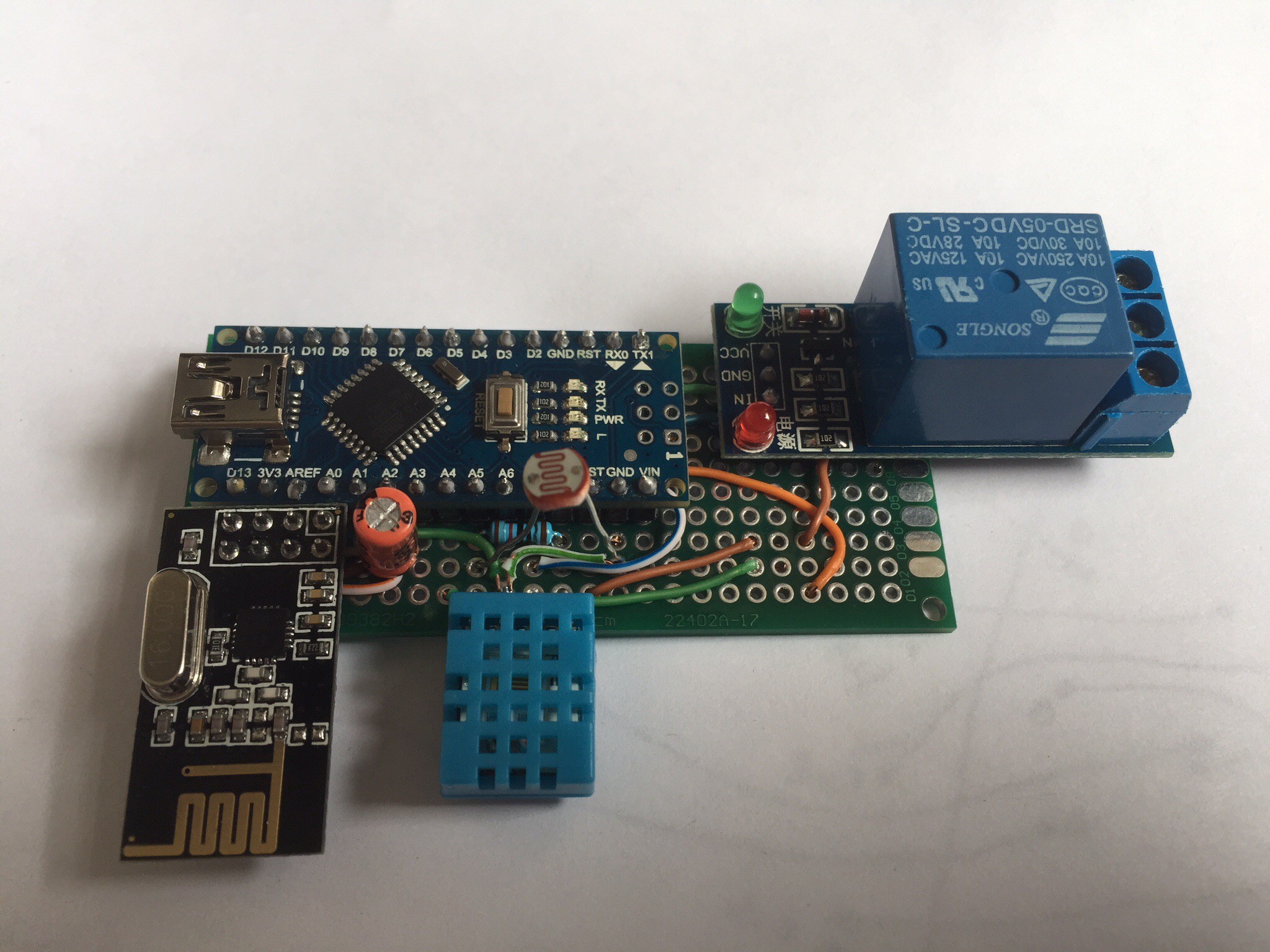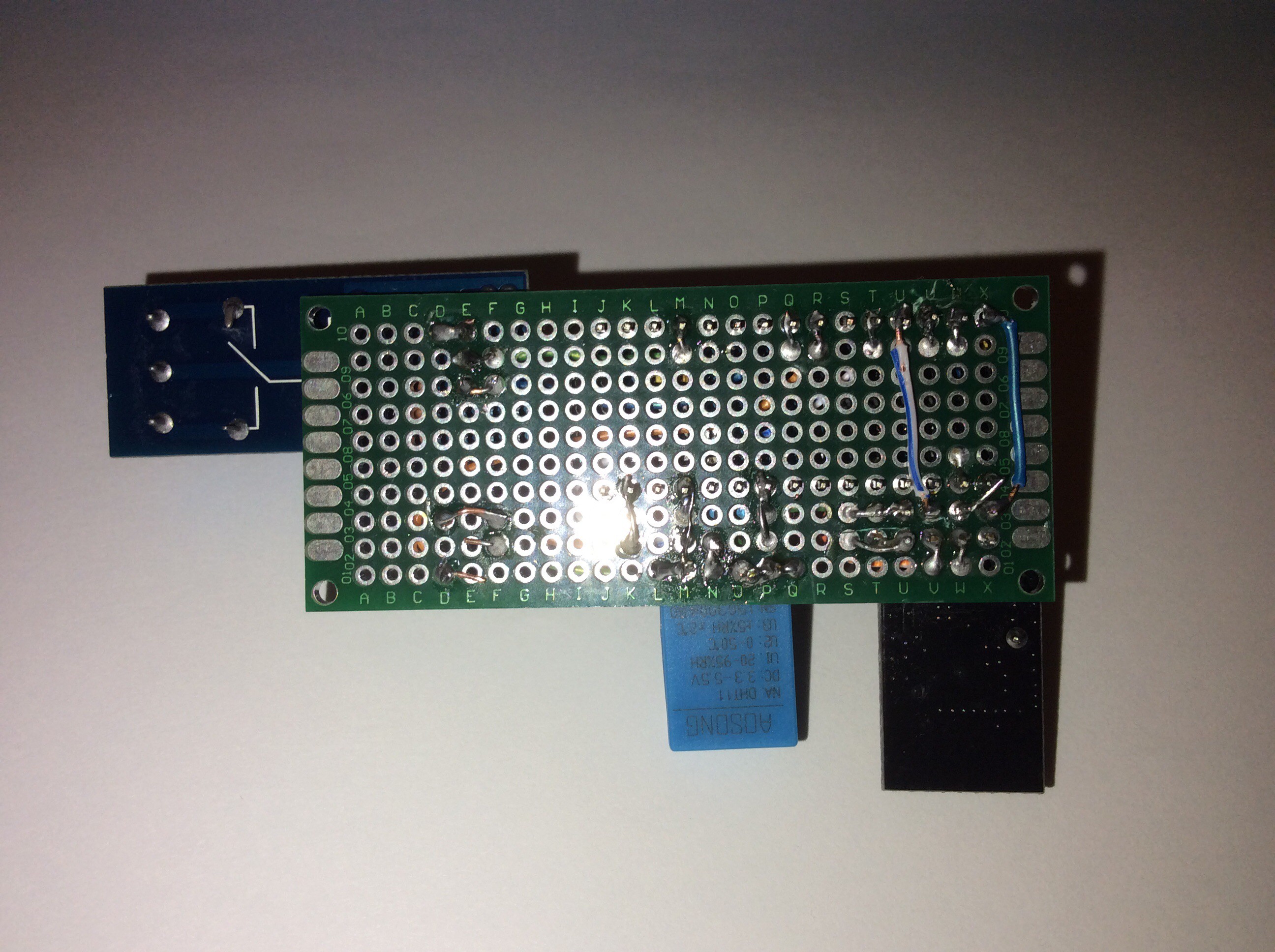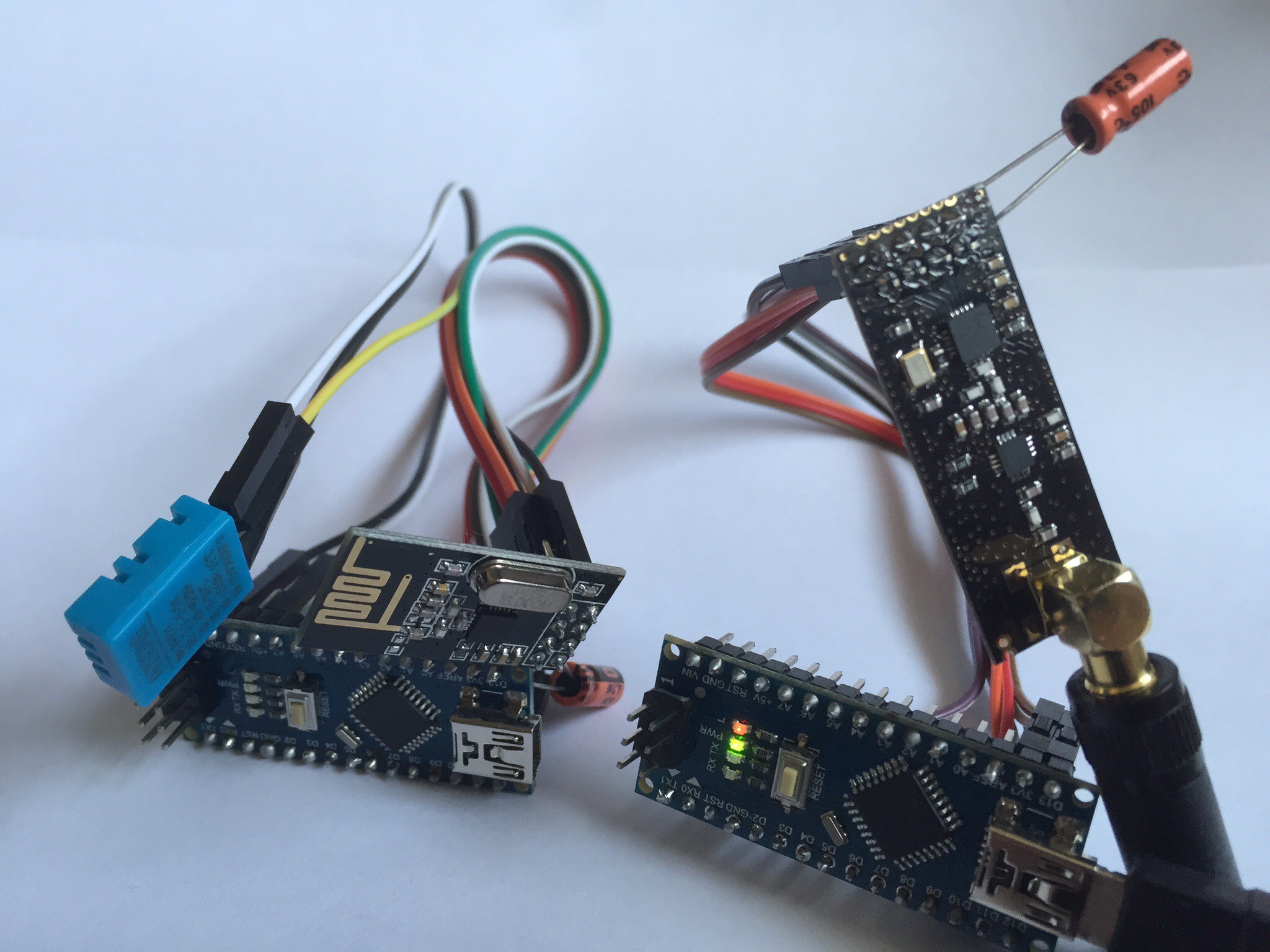-
Remote control made easy...
01/31/2016 at 13:33 • 0 commentsWhile this project is about Home Automation I would still like to control everything from one simple and easy to use interface.
The main problem is that with all the different brands of equipment, come different smart phone apps or remote controls and even different protocols. The key is to have a system that takes care of everything from one place. Once everything can be controlled centrally then the home automation can take shape.
I have chosen openHAB to control everything for a few reasons:
- Its open source and free.
- There are a wide variety of plugins available for it to control different systems.
- It is still being developed and improved.
- There is plenty of support through forums.
- I can create custom devices to send information about the house to it, using MQTT.
- There are iOS and Android apps available fro remote control.
There is of course a downside to it as well:
- There is quite a steep learning curve.
- It is definitely not plug and play, each device has to be setup manually.
- A lot of problems can arise when programming it.
Without spending thousands on a professionally installed system, I still believe that this is one of the best ways of controlling your home using different products. It is also very flexible with all the different systems and communication methods that exist.
-
New year... New stuff...
01/16/2016 at 14:06 • 0 commentsThis is my first log of 2016, yet again life has got in the way of this project. Over the last few months I have been gathering equipment for Smart home control and home automation and things are finally starting to take shape.
TV Distribution:
A few days ago my new 4x4 HDMI Matrix arrived. This allows four HDMI inputs to be distributed to four televisions around the house with two-way IR remote control all through a single cat6 cable.
Audio distribution:
Last year I bought an audio matrix - XAP800 to handle the multi room audio, I have also added a Sonos connect as an input for the matrix. This will allow internet radio and apple music to be streamed around the house. I went with Sonos because of the capabilities of the system and compatibility of the app with many different internet radio and music sources.
Lighting
Last year I bought a Philips Hue starter kit. It is very expensive at around £50 per LED bulb and there is no way I could change every bulb at that price. Philips also make Livingwhites bulbs which integrate with the Hue controller. They have also recently released white LED Hue bulbs at about £15 each. The colours are great to have in some rooms and the white bulbs can be used in all the other rooms. I also have a few LIFX bulbs around, these have Wi-Fi built in and are great to start with as there is no expensive controller.
Heating
I have upgraded my existing wireless Hive thermostat to a nest thermostat. The nest uses smart controls such as presence sensors and learns how you like the heating. This is a true home automation product and I am amazed how easy it was for it to learn our heating patterns while it also saved energy by not heating an empty house. My only issue with nest is that it goes into auto away mode if you do not enter the room with the thermostat for a while. I aim to overcome this by integrating it into my automation system which will have more presence sensors around the house.
Appliance control
I bought a few smart plugs which with an online tutorial I managed to hack and connect them to my openHAB server. So instead of them sending a signal through the internet to a server somewhere and waiting for it to send a signal to the switch, it is now instant and does not rely on a working internet connection.
Home automation software
The raspberry pi 2 is fully setup and running openHAB 24/7. It currently does not control much as I have one sensor and one smart plug connected to it. I am going to expand this system over the next few months to control TV, Audio, Lighting, Heating and appliances around the house. More logs will come soon with more detail but if you are looking for a place to start out I really recommend the Home Automation for geeks website. http://homeautomationforgeeks.com/
-
Project update...
07/30/2015 at 13:49 • 0 commentsJust a quick update to say that I currently don't have anything to update you on in terms of the project. In other news, I have moved house now and once I find the box with my electronics kit and soldering iron in I will really start to update this project. In this new house, well new to me, I plan to start to build the sensors and controllers into each room, implement basic control software and solve many problems that would arise in a real install.
From this point on things will get really exciting, I have already installed one LIFX bulb to act as a nightlight. At the moment this is just on a timer, but I plan on adding movement and light sensors to slowly fade the light up when it is too dark and movement is detected and fade the light back down after a few minutes of no movement.
As there are about 60 lights in the whole house it will take some time (and money) to automate everything. This project will take quite a long time to complete but once all the bugs are worked out it will be very simple to expand the system.
I currently only have two LIFX bulbs but I am looking into the Philips Hue system. I will using Living White bulbs which are white dimmable bulbs that are compatible with Hue. The best thing about these bulbs as the price, about £5 for 15 Watt and about £9 for 20 Watt.
-
Pi 2 up and running
06/08/2015 at 13:41 • 3 commentsI have just setup my Raspberry Pi 2 to run everything I need for my home automation project. I have set it up running:
- Xbian including Kodi (Media Centre) - http://www.xbian.org/
- OpenRemote (for custom iPhone and android remote control - http://openremote.org/
- OpenHAB (Home Automation) - http://www.openhab.org/
- Python (custom programming including currentcost to xively and the new automation software) - Pre-installed
The Pi is connected to:
- NAS Enclosure (Network Attached Server with 2x2TB Hard disks) - used for storing media to access through Kodi
- USB to CurrentCost - to send energy usage data to Xively
- Arduino with RF - connected over Ethernet for two-way communications
- USB backup battery (the kind used to charge phones) This is plugged in all the time and used as a battery backup in the event of a power failure. Some of the main nodes around the house will have this backup as well.
The Pi is running well and consuming much less power than the computer it has replaced with the added benefit of battery backup. Kodi is running on the HDMI output of the Pi and I access it through SSH.
-
First RF sensor node soldered together
05/27/2015 at 22:20 • 0 commentsEdit
![]()
Seven days after my prototype boards arrived I have planned which sensors and controls to add to it and where to put all or the wires. This node is a hybrid sensor and controller combining three sensors (temperature, humidity and light level) and space for two relays to control electrical appliances. Finally a 2.4Ghz RF transceiver is attached to the arduino nano to communicate with openHAB. I am currently powering my sensors from a USB battery pack and even with the built in RF aerial they work all around the house and outside. I will have to see how they cope when I move to the new house with thick stone walls that don't even let a wifi signal work in the next room.
Once I have decided which sensors and controllers to use where I will produce some PCB's to make the sensors slim and neat enough to hide in the room. The controllers will be made into light switches in the rooms, with just one problem, how to get power to them. This one may leak out into a new project as I have already come up with some ideas
![]()
-
Prototype boards arrived
05/20/2015 at 12:52 • 0 commentsI ordered some 7cm x 3cm prototype boards a while ago which have just arrived. I will create a few sensor boards and a relay board to make sure everything is working correctly and test out some of the rules for the automation before I do a big parts order for the new house. These will be put in a temporary box until I finalise the design on my 3D printed cases.
Each sensor or controller will have the same basic components which include the arduino nano, the NRF24L01 and a DHT11 as a sensor in the sensor nodes and as a safety feature in the controller units to make sure nothing overheats. I am also making a PCB to hold the basic components with expansion sockets for extra sensors and control devices.
Over the next few days I will create step by step instructions for the basic sensors and controllers. Please let me know what features you would like to see on the sensors and controllers and I will integrate what I can into the prototypes and the first version of the PCB
-
Node 0 and node 1 now working
05/15/2015 at 14:42 • 0 commentsNode 0 (right in the image) and node 1 (left in the image) are now up and running. I have made node 0 using an arduino nano and NRF24L01 with an antenna, this is now plugged in to my server and connected to openHAB. Node 1 now has a DHT11 temperature sensor attached and transmits information to node 0 which shows up in openHAB.
![]()
My next step is to create more nodes and add extra sensors so that I can gather information from around the house. I will also be working on a circuit board when my prototype boards arrive so that these boards can just plug and play. The board will have female header pins for the arduino and the RF radio with capacitors, resisters and LED's. There will also be a few inexpensive sensors on board including a DHT11, an LDR and maybe a PIR. All of this will be housed in a custom designed 3D case. I am currently designing this as a slim case with the two boards end to end (approx 30mm x 90mm) with holes for the sensors and LED's. Once I get my cases custom-printed it will change my project from a pile of electronics to an actual product that would look good in any room.
-
Searching for a smaller arduino
05/13/2015 at 13:07 • 2 commentsI am looking at making smart sockets and lightswitches which may grow too big for this project and become projects of their own. The main problem I am facing is squeezing all the components in such a small space. There are quite a few micro sized boards out there that are capable of the job. One board that I am considering is the Teensy-LC board, it is a very small board that includes a micro USB for power and programming (a lot of boards this size just have the serial connector and power connectors). Hopefully I will be able to get my hands on one soon to create some prototypes.
I have also uploaded the parts picture from the node 0 update yesterday.
More updates coming soon.
-
Node 0 : Pi 2
05/12/2015 at 22:11 • 0 commentsJust a quick update today...
Node 0 has now been built and programmed, picture to follow shortly. It is comprised of an Arduino nano and a NRF24L01 with a SMA Antenna. This will be permanently connected and powered by the server (currently a PC).
My Raspberry Pi 2 has just arrived today, this will be used as a server once I am happy that everything is working correctly. I have chosen this due to its low power consumption and compact size.
-
Version 0.00000001
05/10/2015 at 22:44 • 1 commentThe very first version of the sensor has now been built. I use the term sensor loosely as it is currently not sensing anything as it is just an arduino and an RF transceiver. I will be adding more sensors to it in the next few days now that I know that the very basic version of the mesh network works as well as improving the sensors.
I have also been looking around at some of the other projects on here for inspiration for lighting control. I have changed my design from a rotary encoder control to a glass covered circuit with capacitive buttons and an OLED two line display. A simple touch will turn the light on or off, at least until I can find an easy way to dim lights. Other functions of the control will include temperature, music control and a room to room intercom.
More updates will be coming soon...
Home automation using RF mesh network and arduino
Creating home automation sensors and controllers that can be used around the house forming a mesh network for communication


